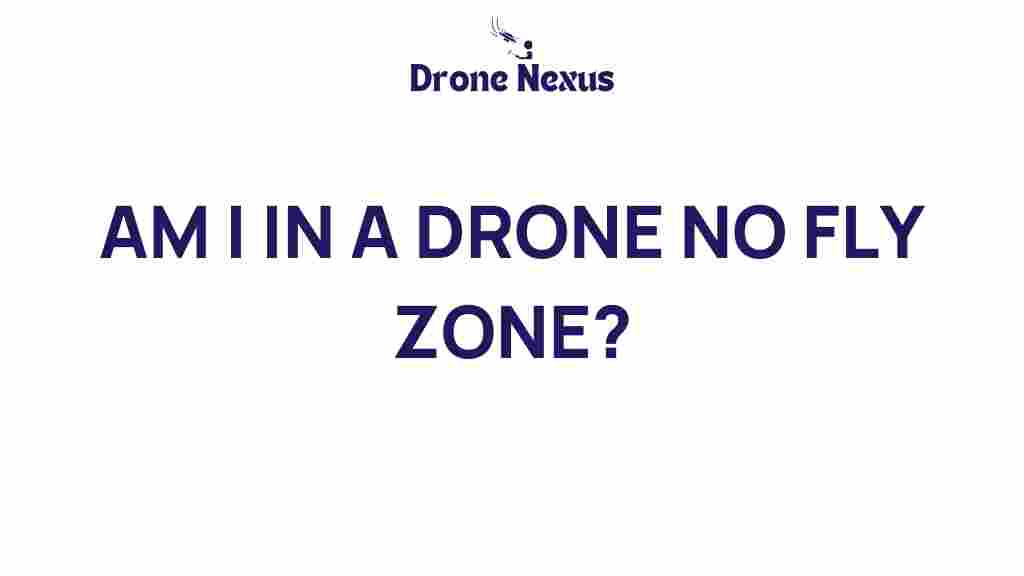Are You Aware of Drone Regulations?
As drone technology continues to advance, the popularity of flying drones for recreational and commercial purposes has surged. However, with this rise in usage comes an important consideration: drone regulations. Understanding these regulations is essential, especially when it comes to no-fly zones. Are you aware of whether you’re operating within a drone no-fly zone? This article will guide you through the steps to find out and ensure that you fly your drone safely and legally.
Understanding Drone Regulations
Drone regulations are established by aviation authorities to ensure safety and security in the airspace. These rules vary from one country to another and often depend on specific locations within a country. Here are some key aspects of drone regulations:
- Registration: Many countries require drone operators to register their drones, especially those weighing more than a certain limit.
- Licensing: Depending on the drone’s intended use, operators may need a special pilot’s license or certification.
- Altitude Restrictions: Drones are typically restricted to flying below a certain altitude to avoid interfering with manned aircraft.
- No-Fly Zones: These are specific areas where drone operations are prohibited, often for reasons of safety, privacy, or security.
The Importance of Knowing No-Fly Zones
Understanding no-fly zones is crucial for any drone operator. Flying in these areas can lead to severe penalties, including fines and the confiscation of your drone. Moreover, it could pose risks to public safety, especially near airports, military bases, and crowded events. Here’s how you can check if you are in a drone no-fly zone.
Step-by-Step Process to Determine Your Location
Finding out if you are in a drone no-fly zone is easier than you might think. Follow these steps to ensure you are compliant with drone regulations:
Step 1: Know Your Drone’s Capabilities
Before you take off, familiarize yourself with your drone’s specifications. Certain models come with built-in geofencing technology that prevents them from flying into restricted areas. Check your drone’s manual for more information.
Step 2: Use a Drone App
Several applications are designed specifically for drone operators to check airspace regulations. Popular options include:
- Aloft: This app provides real-time information about no-fly zones and airspace restrictions.
- Drone Assist: A user-friendly app that includes maps of restricted airspaces.
Simply input your location, and the application will display any nearby no-fly zones.
Step 3: Check Local Regulations
Local authorities often have specific regulations that may not be covered by general drone rules. Visit the website of your country’s aviation authority or local government to find detailed information regarding drone regulations in your area. For example, in the U.S., the Federal Aviation Administration (FAA) provides comprehensive information on drone regulations and no-fly zones.
Step 4: Consult the Community
Online forums and local drone clubs can be invaluable resources. Experienced drone operators can share their insights about local regulations and no-fly zones. Websites like Drone Pilot Ground School offer courses that cover regulations extensively.
Troubleshooting Tips for Drone No-Fly Zones
If you find yourself in a situation where you’re unsure about flying in a specific area, consider the following troubleshooting tips:
Tip 1: Always Update Your Drone Software
Drone manufacturers frequently release software updates that include changes to geofencing and airspace regulations. Ensure your drone’s software is up to date to avoid unintentional flights into no-fly zones.
Tip 2: Use Visual Observations
While technology is helpful, it’s always wise to use your eyes as well. Look for signs indicating restricted airspace, especially near airports or government buildings. If you see such signs, do not fly your drone in that area.
Tip 3: Consult Local Authorities
If you’re ever in doubt, reach out to local authorities. They can provide clarity on whether a specific area is a no-fly zone and inform you of any local regulations that may apply.
Conclusion
Understanding drone regulations is essential for any drone operator. By following the steps outlined above, you can determine if you are in a drone no-fly zone and fly your drone safely and legally. Always prioritize safety and compliance to ensure a positive experience in the skies. Remember that regulations can vary widely, so staying informed is key. Whether you are a hobbyist or a commercial drone operator, knowing the rules will enhance your flying experience while keeping others safe.
For more information about drone regulations and safety, check out the FAA website for resources and guidelines.
This article is in the category Safety and created by DroneNexus Team
